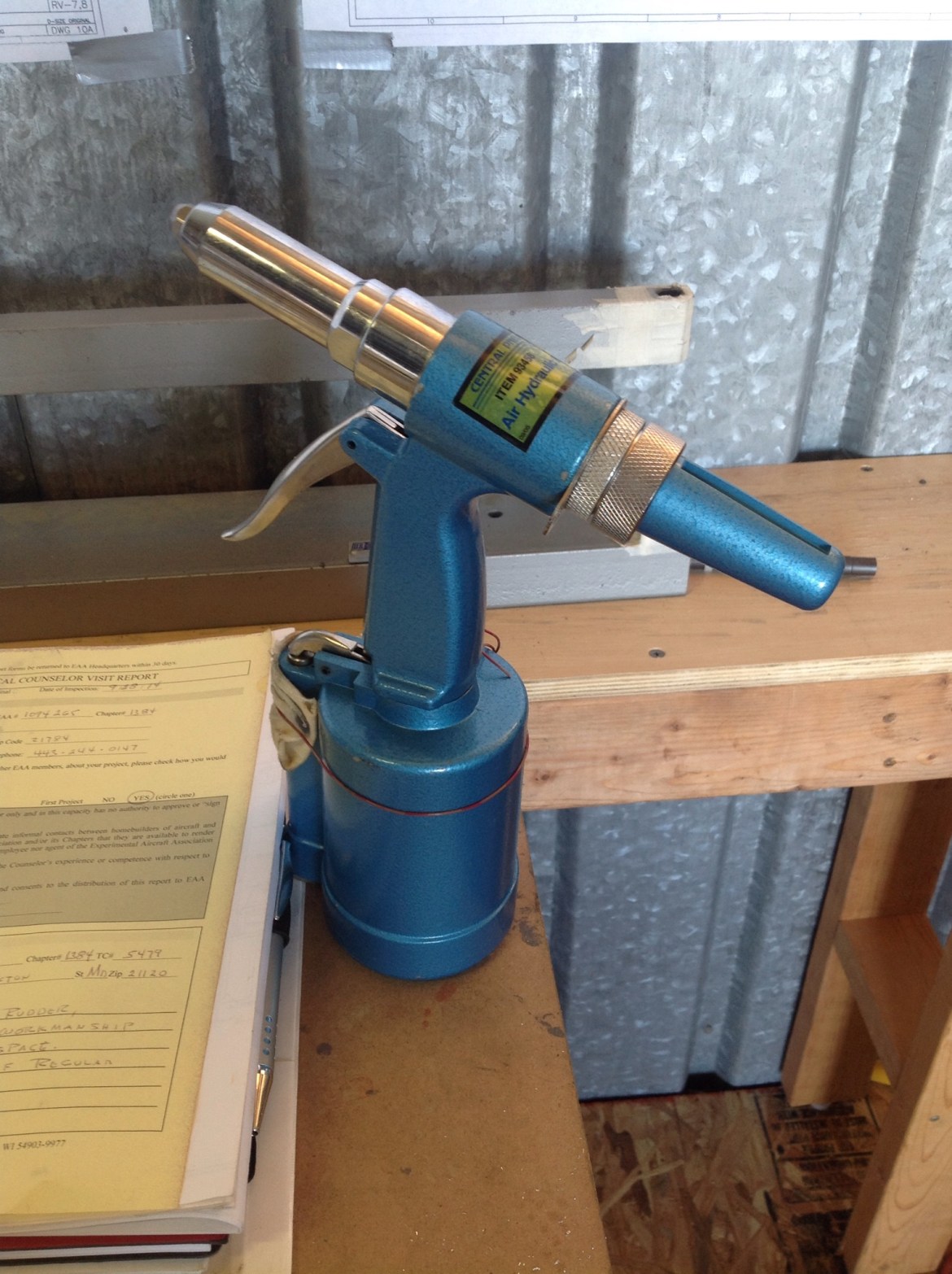Ailerons 11 (5.0 hrs)
Today I started at my Uncle’s to prime the remaining components in the left aileron.
And then it was time to turn my attention back to completing the right aileron. Riveting the center of the spar is difficult to say the least. Here’s how I went about it. It is uncomfortable to say the least. Notice that I have taped my sweatshirt to my glove with paints tape to protect my arm. 
Keeping the bucking bar aligned is difficult, especially since the flange and web of the spar are not at a 90 degree angle. I taped on a small part of a tongue depressor to help line the bucking bar without being able to see it. This allowed me to lay the bucking bar flat on the spar and match the desired angle for the shop head of the rivet. 
It took quite awhile to finish the top of the spar. Given the awkward positioning, progress is very slow. Next it was time to rivet the end ribs. Which was easy peasy.
Then on to the bottom. Now that the top of the spar is complete… finishing up takes no time at all. 
And finally I put the aileron hinge points in place. 

The Collins Foundation brought their WWII bomber to the airport this weekend. I never actually went out to check it out. I’m not sure why, but I’m not really into static displays. Regardless, as I left for the day I snapped this photograph. 
































